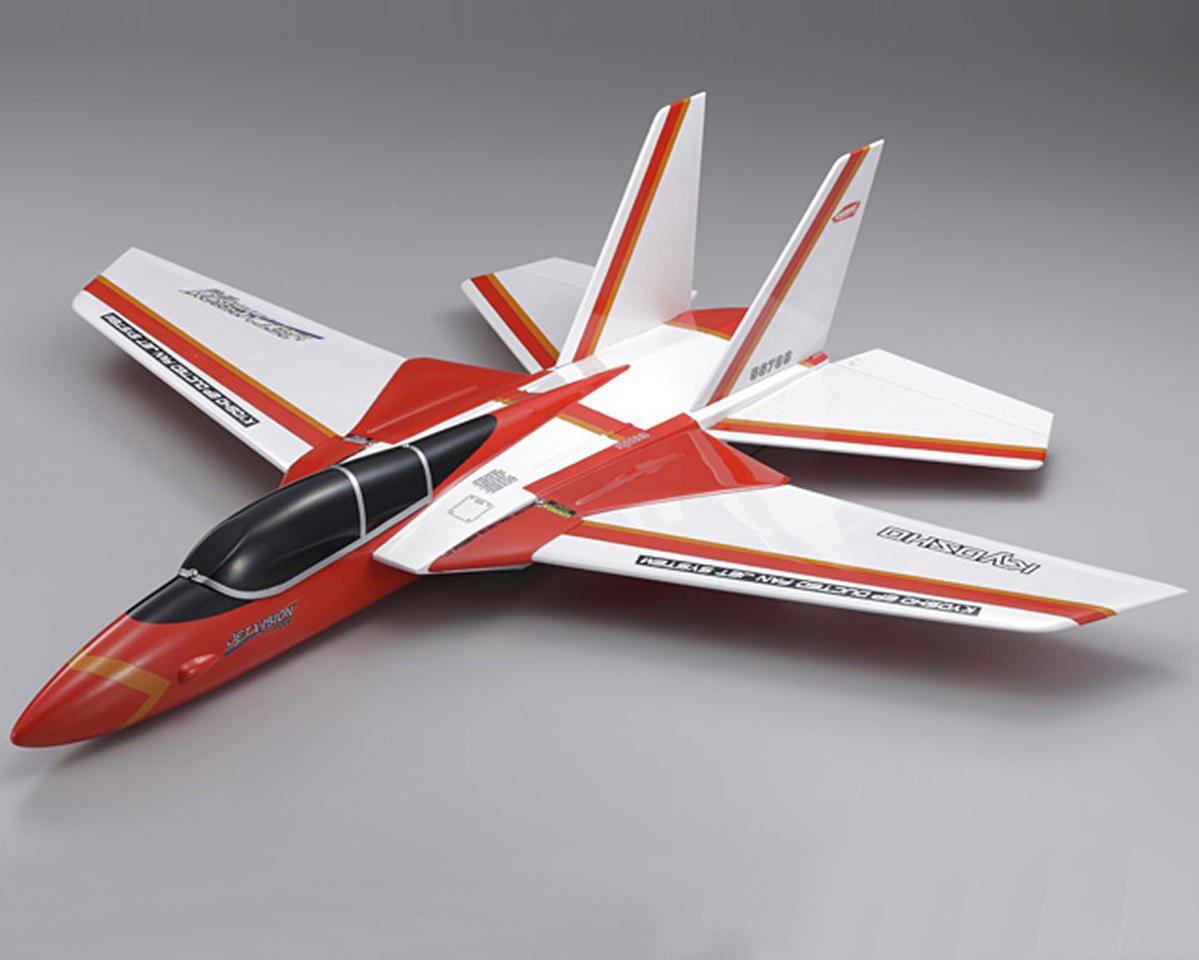Ducted Fan Aircraft - Even in life's busiest moments I also try to maintain some form of modeling activity. This site was created to help me navigate my journey through my lifelong involvement in flight simulators. It all started in Mayo, MD...
Trademarks, copyrights, patents and other rights of ownership in the images and text used on the Airplanes and Rockets website are hereby acknowledged.
Ducted Fan Aircraft

"Jaunty Alouette" is a play on the French folk song "Gentille Alouette" (translated as "Lovely Fun"). This ducted fan control line model by Roy Clough, Jr. is the result of a multi-stage evolution of the ducted fan drive system. pipe Early duct fans were essentially small-diameter wide-bladed blades placed inside a duct (duct). over time Cones are placed before and after the engine and propeller. (Fan or blower) to control the air mass in a way that produces maximum speed. and produce maximum thrust Modern fan units are quite different from those shown here. Especially the shortness of the length of the pipe area. The total frontal area of the blade is about half of the area used in early prototypes.
L39 50mm Electric Ducted Fan Jet
The most practical and easily reproducible version of the turbine jet developed here or abroad. Nice control cable...
This model was developed with the idea of introducing new race classes: control line speed, turbine jets. We further propose that this class is limited to engines with a displacement of .049; that the cross-sectional area of the nozzle is 6 1/2 square meters, thumbs up; The use of igniters after combustion is not allowed. Do not use a dolly or handling equipment and the minimum cable length must be 25 feet.
Wait, what? Aren't there enough different classes? Why are you trying to import another item? and why is there a limitation?
Look for current speed, free flight and stunt work. That basic design philosophy has remained the same for many years. It is already known in which category to design a good model. A lot of people have been tweaking things for a long time until today. The question of how to design is no longer a question. It's about the engines, propellers, and what kind of fuel is best suited to the weather conditions on an official flight day.
Zohd Delta Strike Ducted Fan Fpv Plane Pnp
The pioneering ended well. Today's focus is on management techniques and expertise. So it seems timely to introduce something new to the unfinished, a new area of design experimentation with plenty of opportunities for those with ideas, imaginations and a desire to use them. We think the fan speed model is natural for this purpose.
We assume the proposed limitations are smart. Keeping the displacement low helps avoid confusion of multiple classes within a category. The ban on post-combustion igniters is justified due to their inherent fire hazard. And because it emphasizes the construction of efficient ducts and fans. The elimination of the dolly and drop-down devices should provide an attractive functionally integrated design. And specifying a minimum line length of 25 feet prevents the least thrust work from cheating centrifugal takeoff.
The Purcell Ducted Fan (Original Turbine Jet) replicated in this configuration produces 3 ounces of thrust with the K&B .049.

Sound interesting? So a good time to start is now. And a good model to start with is the Jaunty Alouette, a pinion blower that tends to scale significantly against any estimate. You may have about ducted fan performance at this time.
Xti Hybrid Vtol Aircraft Under Development
What might a scaled-up, manned fighter model look like? As shown on the cover of this issue.
The Newbold's Duct (UK) is the next step up. It delivers 3 1/4 ounces of pressure when piloted by a used Cub .074 rimmed blower.
The original model was rebuilt several times, heavier than 9 1/2 ounces without fuel in the tank. That's about 3 1/2 ounces over what is generally considered the maximum weight for .049 free-flight fans. Still, it hovers within 10-20 feet, depending on the surface. and can reach speeds of up to 40 miles per hour in flight. which is comparable in size to the large edged jet on the Mach 1. It does so with moderately efficient engines. We intend not to use a very hot mill in the works. Because we want to focus on design efficiency. This means that with a 0.049 heat like the Thermal Hopper and a reasonable weight of 7 1/2 ounces (which is easy to overcome as we don't account for excess glue, fabric and wood weight), you won't have any performance improvements that you can't afford. Impressive of the original, even better by a good margin.
Clough's jet pressure is a very simple method of operation, providing a 1.8 oz. push with a Wen-Mac .049 (hot fuel).
Watch This Electric Air Taxi Take Off Vertically, Thanks To 36 Swiveling 'jet' Engines
The theory behind the design of the ducts was developed from numerous experiments with different arrangements. Includes original Purcell duct fan; England's Newbold Channel and the author's centrifugal blower pressure jets. and experiments with improved induction methods. and turbine design
Thomas Purcell Jr., the man who started it all. Used to fan the petals tightly wrapped in the tube. That is, there is very little distance between the tip of the fan and the wall. The hatch must fit snugly for best results with this arrangement. And when properly assembled and carefully tuned. Will be able to produce about 3 ounces pushed with .049. Very suitable for scale type models as the diameter is not too large. Most of the downsides are the structural issues which connect the components. together without excessive weight or weak spots.
The "report" pipe borrowed from everyone had over 2 oz. thrust when using a .020 ball. The effect of the Aries was evident.

After Purcell The most significant deviation is the Newbold Canal, by the British builder of that name. It's completely different. by using a bucket-rim type blower (similar to full-scale) push-type engine installation Conical shock absorber in the rear tube. and a straight-flow stator tank behind the blower. This type generates quite powerful thrust - if the blower is properly positioned. And from the huge number of examples that we have created from this We find blower positioning very important. A 1/2" forward or backward movement can cause up to 50% or more of thrust swing. Unlike Purcell ducts, which work best with solidly mounted fans, Newbold ducts provide the best thrust with fans running unlocked! For induction made except for open wheel wells. open cockpit and micro induction holes in wing roots, 3 1/4 oz., .049 thrust.
Amazon.com: Rc Ducted Fan, Rc Premium 120mm Sedf Electric Ducted Fan Semimetallic 10 Blades With Motor Compatible With Rc Plane
Centrifugal pressure sprayer As shown by the author's Blowbug (Air Trails, August 53), it is an attempt to achieve extreme simplicity through different means. Using high internal pressure and very high speed jets This system is not as efficient as a ducted fan. But it's very easy to put together. It doesn't require specific skills to make a model that will fly quite well. The pull on this work varies from 1.75 to 2 ounces depending on how tight and tight the hatch fits.
The fourth sketch shows the author's attempt to bring together the best angles of Purcell and Newbold with some findings. We call it the “Meld” Duct, and it has been bench tested several times. With the “war-weary” Infant Torp .020, this works, producing more than 2 ounces of static thrust. When in motion, it seems to be propelled by the effect. more jab We already know we have something.
The Clough Duct (thanks to Purcell and Newbold) is produced at over 4 ounces pushed with the Space Bug .049. Airframe construction just got so much easier.
Basically, the "Alouette" pipe has this arrangement. clean up a little by turning the engine Install a bypass and provide a new fan that improves efficiency.
Bell's Changed Nexus Air Taxi Has Four Electric Tilting Ducted Fans
Method: Air is pulled directly up by the ram (during flight) and accelerated down the induction tube by force between the funnel and tube wall. at engine position The air suddenly expands. Increases engine cover heat and air pressure in front of the fan. That is, sufficient cooling and heat recovery are guaranteed to help the fan. Now, where the fan directs the air to move. It has a bypass that allows outside air to suck into the low pressure area. and increase the reaction mass when air moves into the exhaust duct The air speed is controlled. Increases speed and reduces back pressure at fan operation. and as it flows through the stator fins that support the cone The renewable energy sent from the fan will be recovered further. Increased thrust and thrust at the injectors.
And this is why Alouette can start at a great height and stick to the line - with an engine that rides four revolutions!
The creation of this model is the result of the experience of many fans - the best effort to eliminate

Ducted fan personal aircraft, ducted fan, ducted fan vtol aircraft, ducted fan ultralight aircraft, ducted propeller aircraft, ducted fan rc aircraft, ducted whole house fan, electric ducted fan aircraft, ducted fan aircraft design, aircraft ducted fan, ducted fan homebuilt aircraft, ducted fan model aircraft
0 Comments